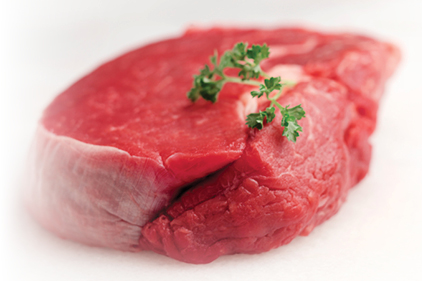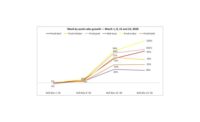
|
This follows FSIS initiatives earlier this year on Salmonella and Campylobacter.
The economic pressures on further-processors are intense. Although it is right to combat these pathogens, additional testing will add to production costs at a time when every saved penny counts. Further-processors are turning to NAMP and other associations for timely and cost-effective help on food safety.
Last year, NAMP made a strategic decision to make food-safety education one of its top strategic priorities. This year, NAMP organized or partnered on eight food-safety education events to help its members and the entire industry. Four of them were brand new.
In 2012, NAMP will conduct nine food-safety education events. All are partnerships with other industry trade associations, not only in the U.S., but in Canada and Mexico as well. NAMP will either take the lead in organizing them, or partner with other associations on events they organize.
It makes no sense for the industry’s associations to go it alone when we can offer more to our members and the industry by inviting other associations to partner with us. Following our recent webinar on Salmonella, organized with USPOULTRY, are these two important events scheduled for the rest of the calendar year:
· Coming up on Nov. 2, 2011, is a session on E. coli O 157:H7 and the Big 6 non-O157 STECs at Process Expo in Chicago.
· The AdvancedListeria monocytogenes Intervention and Control Workshop, organized by the American Meat Industry Foundation, is Dec. 6-7, 2011, at the Hilton Rosemont in Chicago.
After the first of the year, the industry will look for help with food-safety issues at:
· The Salmonella and Campylobacter Reduction Conference, Jan. 27-28, 2012, before the International Poultry Expo in Atlanta. Our first conference last year drew 442 registrants.
· A food-safety mini-conference on March 15 in Chicago before the NAMP Management Conference.
· NAMP’s Management Conference, March 16-18, at The Drake in Chicago. Last year’s conference had record attendance.
· Two Campylobacter Workshops at Auburn University, in the first and second quarters of 2012.
· An E. coli Conference next August or September. This year’s conference, with 12 other industry associations, had more than 100 attendees.
· NAMP’s Outlook Conference in the fall.
Many leading food-safety authorities give generously of their time and expertise to help further-processors. They are the people at these conferences who share the latest developments, and how best to tackle these pathogens.
And thanks go to FSIS, CFIA and other government agencies for working with NAMP and other industry associations on these events. FSIS has formally partnered with NAMP on the E. coli Conference for several years now, and Dr. Elisabeth Hagen, USDA Under Secretary for Food Safety, spoke at the NAMP Management Conference last March. With government travel budgets tightening in 2012, NAMP sincerely hopes these agencies will carve out funds to allow travel for these in-person presentations.
As much as attendees appreciate the extra effort to make long-distance presentations by phone, evaluation surveys show attendees miss the personal interaction, both in the presentation as well as in the halls before and after.
If your company has not taken advantage of these education events, we encourage you to do so in 2012. The industry has responded well to NAMP’s initiatives. More than 60 companies joined NAMP in the 12 months ending Sept. 30, 2012.





Report Abusive Comment